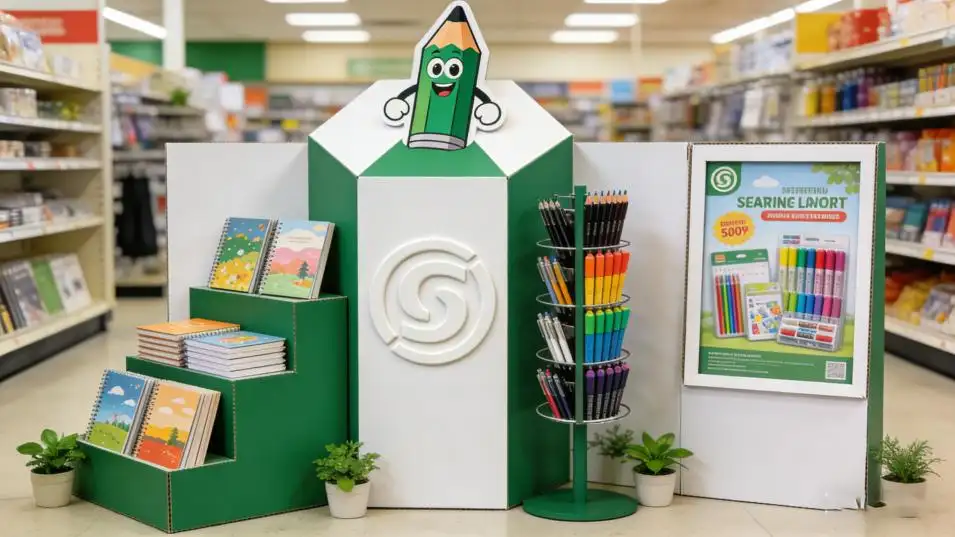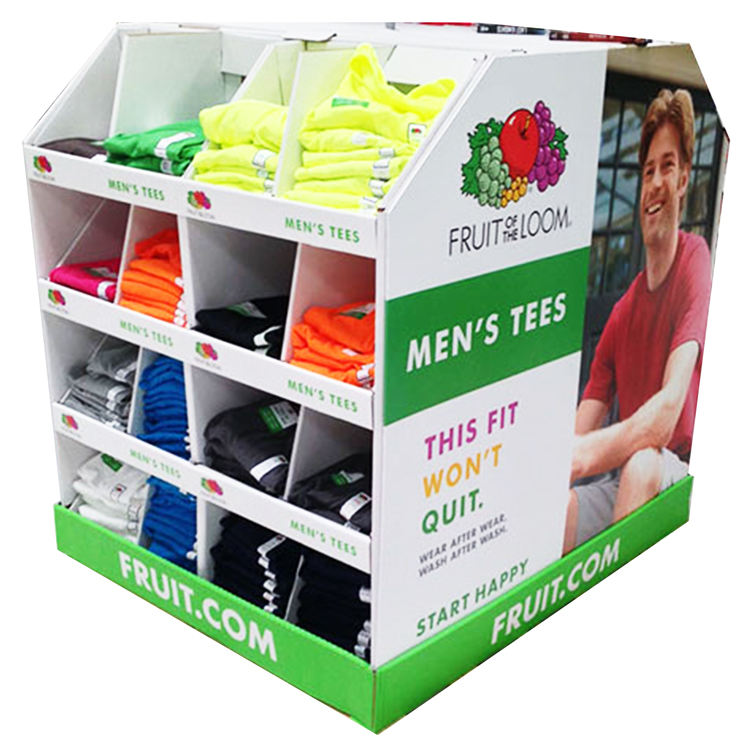Struggling to make your cosmetics stand out in a crowded store? Weak displays can lead to lost sales and a poor brand image. Custom cardboard displays are your solution.
Cosmetic cardboard displays are custom-printed, temporary point-of-sale fixtures made from corrugated cardboard. They are used in the cosmetics industry to attract customer attention, showcase products for promotions or new launches, and drive sales directly from the retail floor, enhancing brand visibility and engagement.
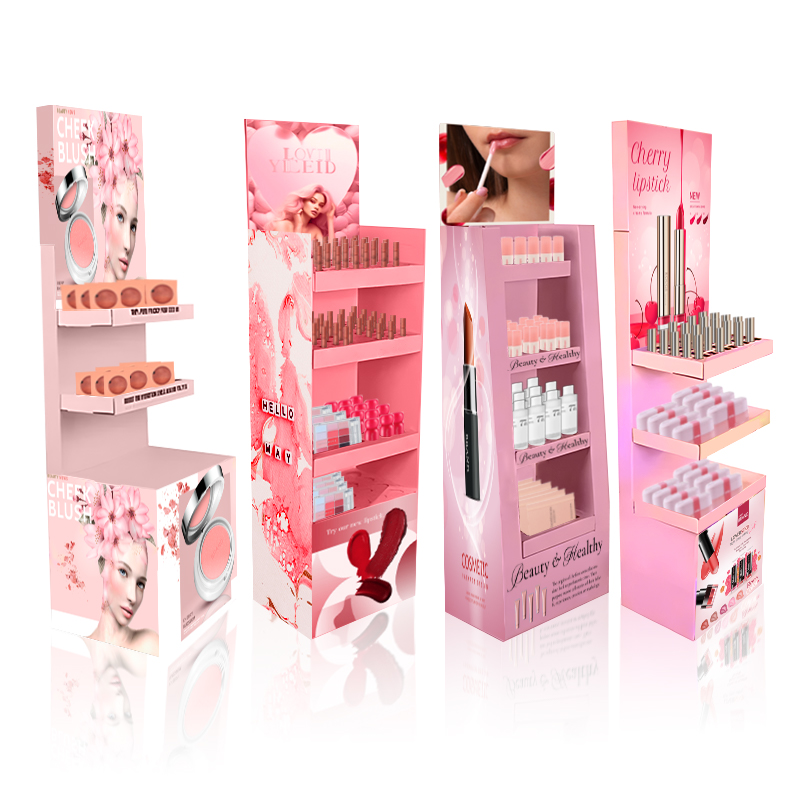
As someone who's spent 16 years in this industry, I've seen firsthand how the right display can make or break a product launch. A well-designed display is more than just a shelf; it's a silent salesperson working for your brand 24/7. It tells your story, highlights your product's best features, and guides the customer toward making a purchase. In the fast-paced world of cosmetics, capturing that initial glance is everything. Let's explore how these displays can become your most valuable marketing tool in a physical retail environment.
What Makes Cardboard the Ideal Material for Cosmetic Displays?
Choosing the right material for your display can be overwhelming. The wrong choice can be costly and harmful to the environment. Cardboard, however, offers a perfect balance of benefits.
Cardboard is the ideal material because it is cost-effective, incredibly lightweight, and fully customizable with high-quality printing. It is also eco-friendly and recyclable, aligning with the sustainability goals of many modern cosmetic brands and appealing to environmentally conscious consumers.
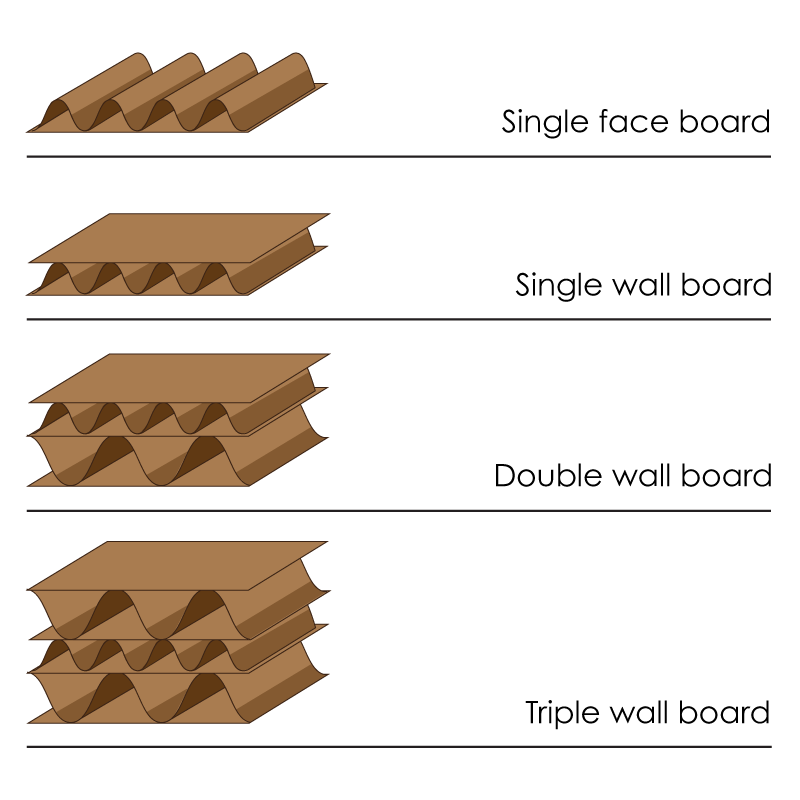
When I first started lddisplay, many clients were skeptical about using cardboard for premium products like cosmetics. They worried about strength and appearance. But over the years, the technology has advanced so much. We can now create displays that look incredibly premium and are surprisingly durable. It all comes down to understanding the material's properties and how to use them effectively. I always tell my clients, especially designers like Peter, not to underestimate cardboard. It’s a canvas that offers endless creative possibilities without the hefty price tag or environmental impact of plastic or metal. The key is in the engineering and the quality of the finish, turning a simple material into a powerful sales tool.
From Cost to Creativity
The versatility of cardboard is its greatest strength. For designers, this means fewer constraints. For brands, it translates to a better return on investment. Let's break down the main advantages.
| Feature | My Insight and Experience |
|---|---|
| Cost-Effectiveness | Compared to permanent materials like acrylic or wood, cardboard is significantly cheaper. This allows brands to run more frequent campaigns or allocate more budget to the product itself. I worked with a startup beauty brand that could afford to place displays in twice as many stores simply by choosing cardboard over acrylic. |
| Customization & Printing | Cardboard is a dream for graphic designers. We can print high-resolution imagery and achieve vibrant colors directly onto the surface. This is critical for cosmetics, where color matching and brand aesthetics are everything. We can do complex die-cuts to create unique shapes that grab attention from across the aisle. |
| Sustainability | Modern consumers care about the environment. Using recyclable cardboard displays shows that your brand is responsible. I've seen brands gain loyal customers by highlighting their use of eco-friendly materials. It's a powerful message that resonates deeply in the beauty community and enhances your brand's reputation. |
| Lightweight & Assembly | Retail staff are busy. A display that is heavy or takes an hour to build is a nightmare for them. I always design our displays to be assembled in minutes without any tools. A happy retailer means your display gets prime placement, not left in the stockroom. |
How Do Different Types of Displays Serve Specific Cosmetic Products?
Using a one-size-fits-all display just does not work for cosmetics. The wrong display type can make your products look messy or, even worse, completely hide them from view.
Different display types serve specific purposes. Counter displays are perfect for impulse buys like lip glosses. Floor displays create a 'shop-in-shop' for new collections. Pallet displays move high volumes of product in big-box stores. Each is designed to maximize a product's specific sales strategy.

The secret to a successful retail campaign is matching the display type to your product and your goal. I always ask my clients, "What do you want to achieve with this display?" Are you trying to introduce a new serum? Boost sales of your best-selling lipstick? Clear out seasonal stock? The answer determines whether we design a small, punchy counter unit or a large, immersive floor display. I once helped a client who was putting small eyeshadow palettes in a huge floor display. Shoppers couldn't see the product properly. We switched them to a tiered counter display, and sales tripled in a month. It's about putting the product in the right context for the shopper.
Matching the Display to the Mission
Understanding the function of each display type is crucial for any product designer or brand manager. It ensures your product is presented in the most effective way possible to drive sales.
1. Counter Displays (PDQ - Product Display Quickly)
These small units are champions of the point-of-sale. They sit on the checkout counter or other shelves to encourage last-minute purchases. They're perfect for small, high-margin items like lip balms, mascaras, nail polishes, or travel-sized products. A great PDQ has clear pricing and makes the product easy to grab. In my experience, a well-placed counter display with an irresistible offer can increase sales of that single item by over 20%.
2. Floor Standing Display Units (FSDUs)
These are the workhorses of in-store marketing. An FSDU is a standalone unit that can hold a significant amount of stock and create a real brand presence. They are ideal for new product launches, promoting an entire skincare line, or for seasonal campaigns. The large surface area provides ample space for branding and educational content. I remember designing an FSDU for a suncare range shaped like a giant pair of sunglasses. It was impossible to miss and told the product's story instantly.
3. Pallet Displays
When you need to move a large volume of product, especially in warehouse clubs or large supermarkets, the pallet display is your best friend. These displays are shipped pre-stocked on a pallet and placed directly in a high-traffic aisle. Their main job is to sell, sell, sell. The design must be structurally sound to handle the weight and simple enough to communicate a strong value proposition, like "2 for 1" or "Special Edition." The design challenge here is more about logistics and structural integrity than intricate aesthetics.
What Key Design Principles Make a Cosmetic Display Stand Out?
Your display design looks amazing on a computer screen, but it fails in the actual store. This common problem leads to a wasted budget and missed sales opportunities for your brand.
A great display balances three things: strong branding, smart structural design, and the customer's journey. It must be visually stunning, sturdy enough to hold the products securely, and incredibly easy for shoppers to see, understand, and shop from.
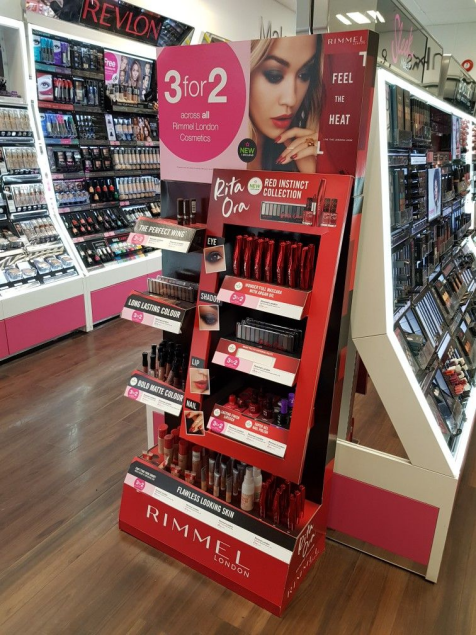
As a manufacturer, I often collaborate with talented designers like Peter. The most successful projects happen when we merge creative vision with practical engineering from the very beginning. I’ve seen brilliant visual designs that were structurally impossible to produce or would collapse under the weight of the products. A successful display is a team effort. The designer brings the brand to life with stunning graphics, and my team ensures it can be built, shipped, and will stand tall and proud on the shop floor. It's this partnership between art and engineering that creates a display that not only looks good but also performs its sales function flawlessly, which is the ultimate goal for everyone involved.
The Blueprint for a High-Performing Display
To create a display that truly works, we must think like a designer, an engineer, and a shopper all at once. Here are the core principles my team and I focus on for every single project.
1. Structure is the Foundation
Before we even think about colors, we think about structure. How much does each product weigh? How many will sit on a shelf? A display that sags or breaks is a disaster. We choose the right grade of cardboard (e.g., a sturdy B-flute for shelves, a sleek E-flute for graphic panels) and design internal supports to distribute weight evenly. I recall a client who wanted a very slender design for heavy glass serum bottles. My team re-engineered the internal structure with hidden cross-braces, keeping the sleek look while ensuring it was completely safe and stable.
2. Visuals Must Grab Attention
You have about three seconds to capture a shopper's attention. This is where visual merchandising comes in.
- Hierarchy: The most important message (e.g., "New Luminous Foundation") should be at eye level and easy to read from a distance.
- Color & Graphics: Use brand colors to build recognition but also use contrasting colors to highlight key information. High-quality imagery of the product in use is very effective.
- Simplicity: Don't clutter the display with too much text. Use short, benefit-driven headlines. What problem does your product solve? Make that clear.
3. Design for the Shopper
A display isn't a museum piece; it needs to be interactive. A shopper should be able to easily take a product without knocking others over. Testers should be accessible. Information should be clear.
| Do | Don't |
|---|---|
| Place products at arm's reach. | Make shoppers bend down or reach up high. |
| Make the product easy to remove. | Pack products in so tightly they are hard to grab. |
| Use clear, bold pricing. | Hide the price or make it hard to find. |
| Organize products logically (e.g., by shade). | Create a jumbled, confusing layout. |
Conclusion
In short, custom cardboard displays are a versatile and powerful tool. They help boost cosmetic sales, grab customer attention in busy stores, and build a stronger brand image effectively.



